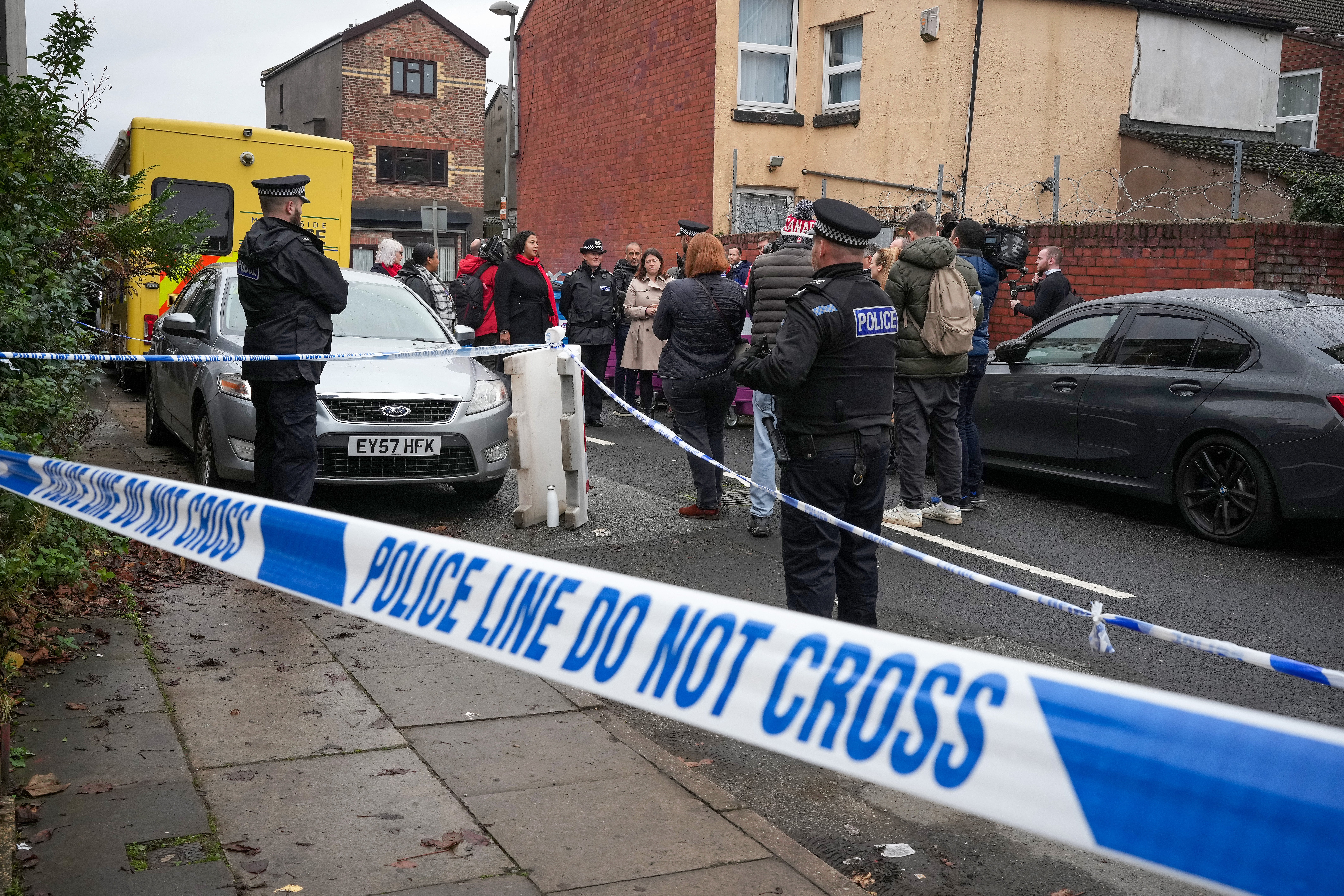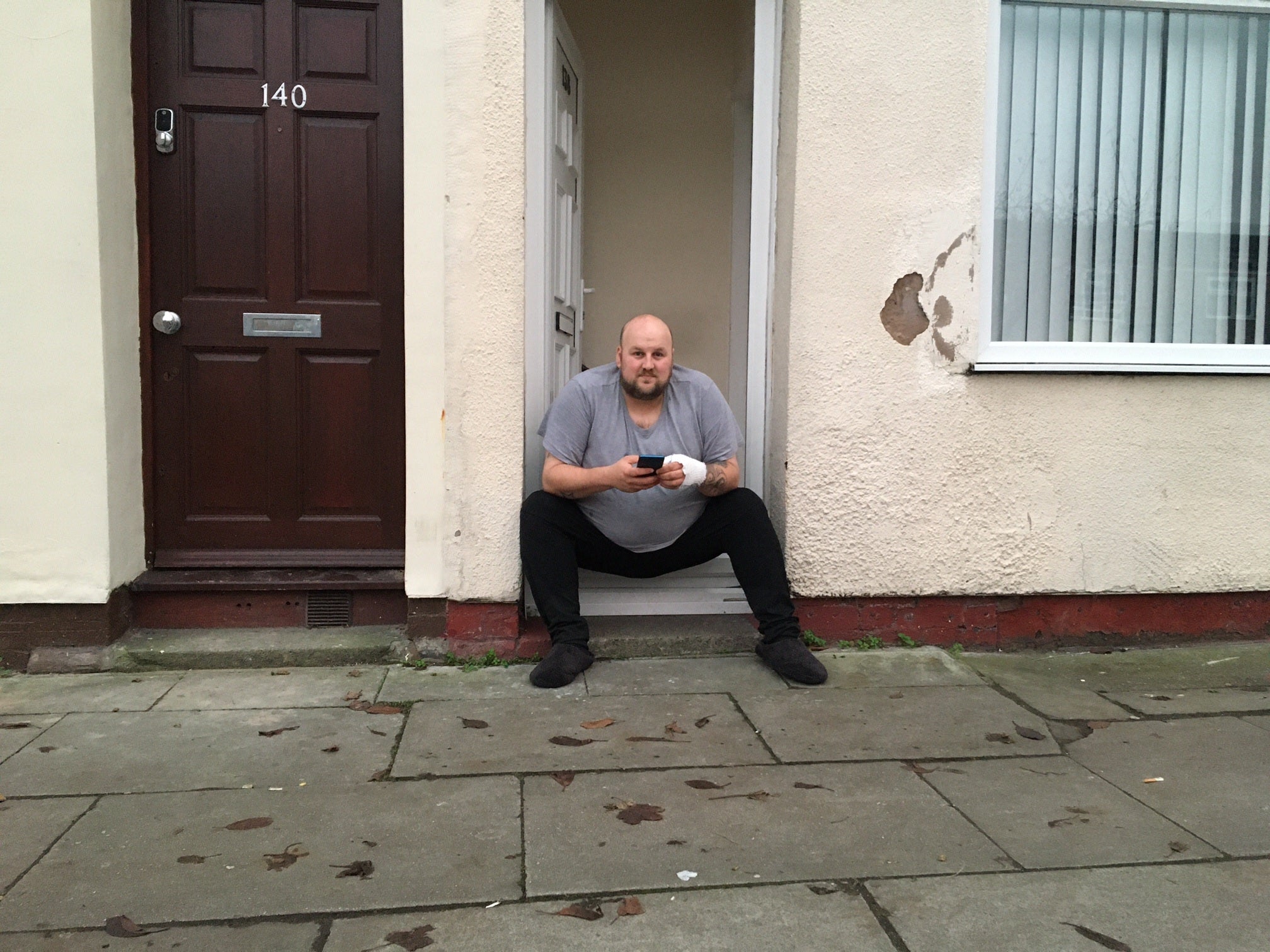‘What kind of person goes after a hospital?’ Liverpool reels as details of terror plot emerge
As police probe bomber killed in blast outside maternity ward, revulsion grows on streets of the Kensington area he called home, finds Colin Drury


A little after 5.30pm on Sunday, Jamie Wharton looked out the back window of his terraced house in Liverpool’s Kensington area and saw a dozen armed police positioned in his back yard and the alleyway behind.
“They had balaclavas, helmets, automatic weapons,” the 31-year-old says. “I was s***ing myself. They looked like they were here for a small war.”
This is how the inner city area found itself on the front line of the UK’s latest battle against terror.
Six hours earlier Emad al-Swealmeen had exploded a bomb outside the Liverpool Women’s Hospital, killing – by some stroke of fortune – only himself. Now, police had traced the 32-year-old’s home to an asylum hostel – a converted terrace – in Sutcliffe Street behind Wharton’s own house.
“We have a two- and a one-year-old,” Wharton, an insurance worker, told The Independent on Tuesday. “We put them in the front bedroom watching TV but I’ve never felt so helpless as a father. I had no idea what I’d do if I started hearing gun fire.”
Three doors down, there was bravado but similar concerns in the Sir Walter Raleigh pub. Police had burst in there ordering the doors to be locked until further say so.
“Someone asked if they could keep drinking,” manager Kerri Shaw says. “They said, ‘Do what you want but stay back from the windows’.”
Was she frightened? “Terrified. They call it terrorism. That’s what it is.”

Three days on, this terror – this visceral shock at what unfolded across this city on Remembrance Sunday – has not abated in Liverpool. The failure of Al-Swealmeen – who police have said asked to be taken by taxi to the hospital – to cause greater carnage has not diminished the sense of horror here.
Rather, with counterterrorism police investigating the possibility he could have been targeting a hospital busy with nurses, mothers and newborn babies, there is growing revulsion. So many people here have so many connections with the Liverpool Women’s Hospital – almost 10,000 babies are born there every year – that the attack feels intensely personal.
That it appears to have originated from someone living in Kensington has left those who call the place home reeling.
The first many knew of it here was 3pm on Sunday when police first started banging on doors telling people to stay inside. Evacuations were then carried out late on Sunday night when it emerged there may be bomb-making material still in Al-Swealmeen’s property. Four people were arrested, although all released without charge. An address in Sefton Park’s Rutland Road – which Al-Swealmeen had started renting two months ago – was also raided.

“What kind of person goes after a hospital?” asks Paul Hill, who works at Liverpool Tile Warehouse across from the cordoned off house in Sutcliffe Street. “How can you even think about it?”
He has a five-year-old himself who was born at the hospital. “Imagine being there and that going off outside,” he says. “You can’t stop living your life because then you let them win. But for me, I’m working here, across the street from his house and it’s like you just don’t know what people are doing behind closed doors. It’s frightening.”
Kensington itself is one of Liverpool’s most deprived areas. Hundreds of its Victorian terraces are now houses of multiple occupation – mainly asylum seeker lodgings and student digs. One large terrace here sold for just £70,000 earlier this year.
Yet there is pride among residents too.
“I wouldn’t live anywhere else, mate,” says James Ashworth, who originally comes from Bournemouth but now lives in Cambria Street North, just behind Sutcliffe Street. “Best place in the world. Apart from when you have armed police banging on your door.”
While some have suggested the attack may create tensions between locals and asylum seekers in the neighbourhood, Joanne Anderson, the directly elected mayor of Liverpool, thinks not.
“We will be prepared because we know from other areas, when something like this happens, you then see a rise in hate crimes,” she says. “But I’m confident that people in Liverpool will respond to something like this by pulling together.”
She herself visited Kensington on Tuesday morning to offer reassurance. What did people say to her? That the area is missing a lot of street lights, apparently.
“We have said we will get that fixed because this is about helping people feel safe,” she says.
Back with Wharton, however, that may all come too late.
He’s sat on his doorstep as he speaks with a distinctly dejected air. “We’ve already spoke about moving after Christmas,” he says. “The place feels tainted now. It doesn’t feel safe. I don’t want this to be home anymore.”
Join our commenting forum
Join thought-provoking conversations, follow other Independent readers and see their replies
Comments